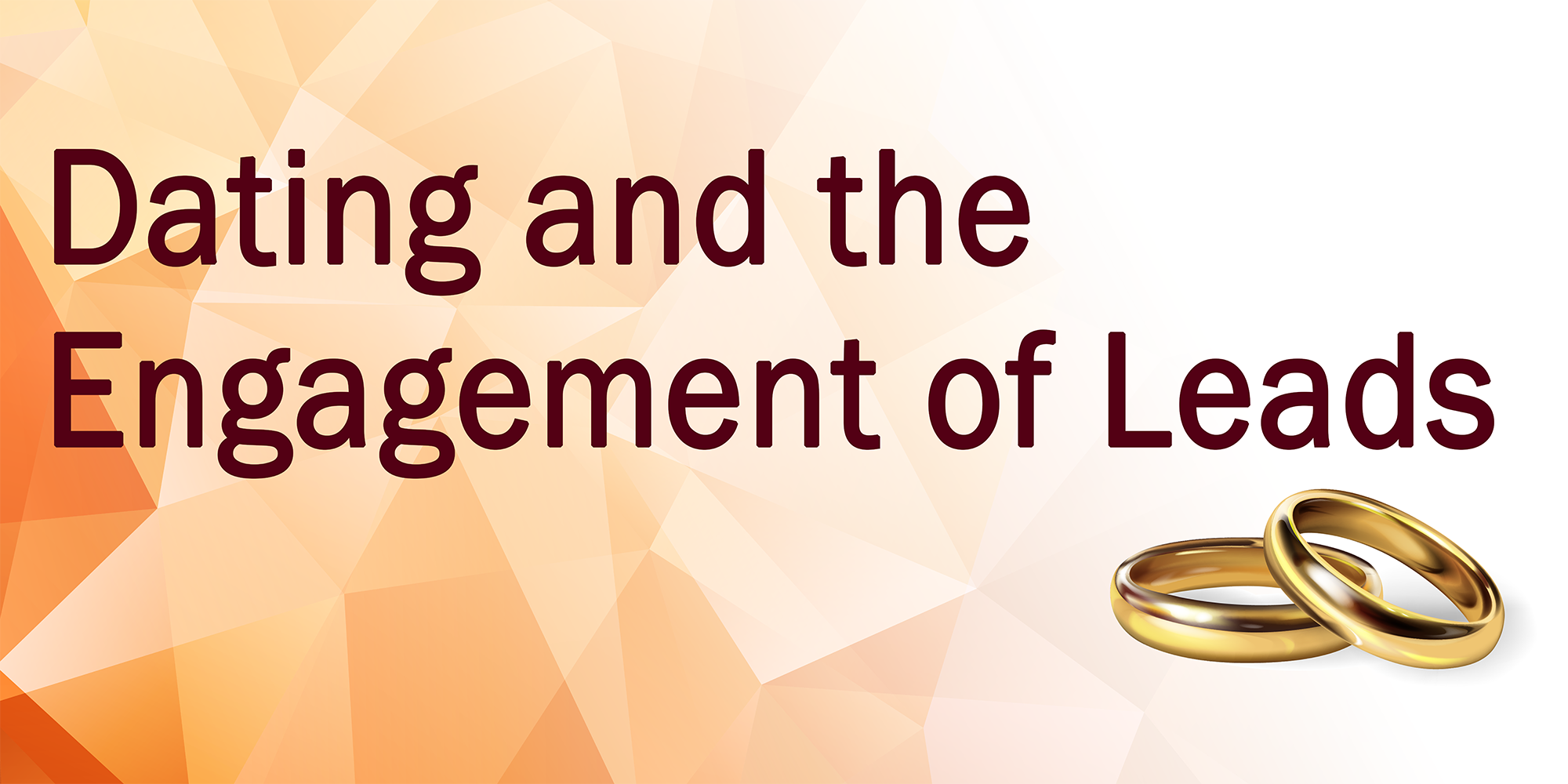
It’s exciting when a couple makes it official—i.e. ties the knot, gets married, becomes legally bound with the simple two words of “I do!” It is all a cumulation of what has happened over the course of several weeks, months, or even years, leading to the engagement and marriage. Sometimes, from dating, engagement, to marriage is quick, less than 2 months, and others seem to go on for 2+ years. When I popped the question to my wife and she accepted (phew!) our engagement to marriage was just about a year and change.
So, what does a marriage proposal have to do with marketing? Good question. It’s all the nurturing and engagement that lead up to finding ‘The One’. There’s a lot of discussions and points on the questions: “What is an engaged lead?” and “How long do we need to nurture a lead?”
There are several opinions of what an ‘engaged’ lead means. In my experience, an engaged lead is a person who has done more than just open an email, click to a LP, or download an asset. The person has shown a consistent level of interest and actively participates (i.e. engages) with various content. Opening one email and/or clicking on one link is not engaged; neither is downloading one asset or participating in one webinar or event. Just like in dating, it’s generally not one date, then engaged—there’s a little more to it.
Dating & Engage Leads
Dating, courtship, and engagement have changed over the years. In my parent’s day, you married your high school sweetheart, or thumbed your way through the Yellow Pages to find your plumber or lawyer. Nowadays, you have the option to swipe left and right well after your first AARP magazine arrives.
All that to say, your leads have options, and engagement has become more complex. Today, leads have the option to read 3rd party reviews, read your content, sign-up for a trial or test software of over 20 of your competitors.
Market research shows that a person spends upwards of 70% in online research prior to any purchase, which indicates that the journey of engagement is more than a single occurrence or activity (which can include mixed messages). Of course, this is all dependent on the typical sales cycle of the products or services.
The definition of engagement and duration of a sales cycle differs from company to company, so feedback from the sales organization is critical. Most marketing automation platforms use ‘scoring’ models and structure to help quantify the engagement of leads by assigning values to various activities and participation in the journey (look out for our ‘Best Practices – Scoring Model’).
Engaged Lead
What’s an engaged lead? There’s no one answer, so here is a basic definition: it’s a person who has shown a consistent level of participation over the course of several weeks or months based on the typical sales cycle of the product or service. Lead scoring, sales input, and other factors, can help define an engaged lead.
Look at some irregular engagement journeys to find your ‘other factors’. Does the lead jump from different services or products and not one consistent interest? In that case, maybe the lead is ‘Hot’ and wants to know more about your company as a whole, before they purchase. Or maybe a lead is just interested in one type of content (eBooks vs webinars)? This lead possibly has a need or pain point and they are educating themselves through your content.
Ghosting
As for understanding the ‘inactivity’ of a lead it’s along the same lines as an engaged lead discussed above, except activity drops off. In dating, we hope that a potential match will continue to engage through regular dates, social engagements, communications, and so forth. However, if we get ‘ghosted’ or the person seems uninterested, then the relationship is not moving forward.
Generally, in B2B situations, if a lead does not interact or engage for 2-3 months, then most likely their level of interest has waned (or they purchased with a competitor). For B2C, it could be in as little 3-4 weeks (or even quicker); once again, depending on the average sales cycle. This is where lead decay scoring (i.e.negative scores) comes into play and helps to adjust the value of a lead based on their engagement with the services/products.
For example, in a simple engagement program with three streams (TOFU, MOFU, BOFU), and five emails in each stream sending once a week—if a lead goes through all five emails in the TOFU stream and does not engage (no opens, no clicks); then you can reasonably assume they are not interested and can be moved to a ‘long term’ engagement program—monthly newsletter or other product announcements. If there is no further engagement/activity after 2-3 additional monthly emails, you should probably remove these folks from any further communications on that specific topic/interest until the person re-engages on their own, if at all.
So, the next time you are dating, proposing marriage, renewing your vows, or just celebrating an anniversary, think about how leads are much like your own engagement journey and take it as an opportunity to nurture your ‘special someone’.
Here’s to your engagement journey and prosperous union (both personally and professionally)!
Engagement Framework
To learn more, check out our Engagement Framework approach that is designed to help companies refocus their marketing efforts around relationship development and the integration of your marketing technology solutions.


